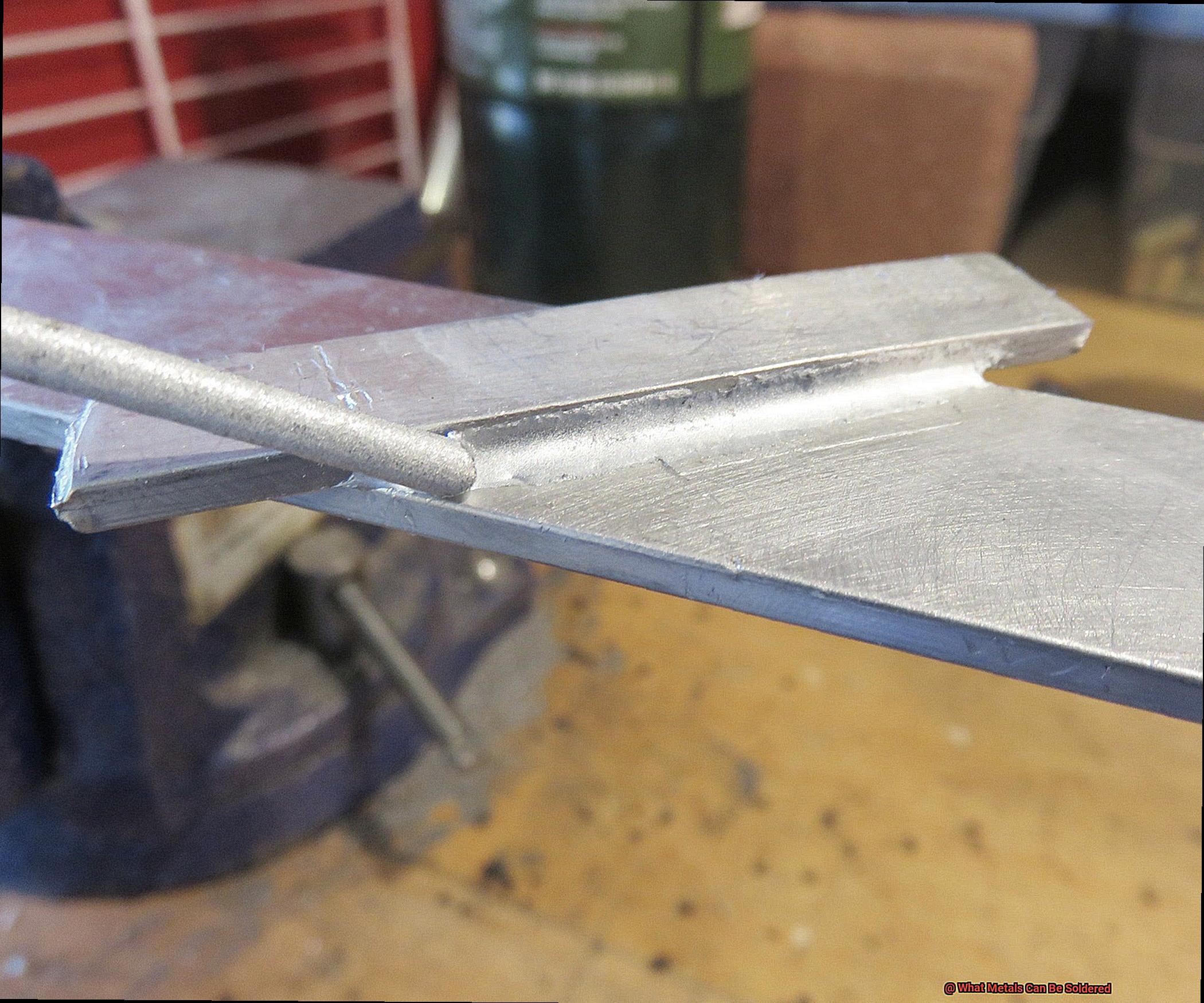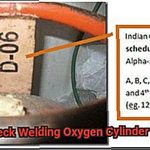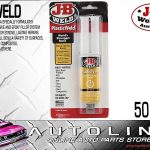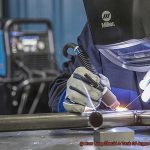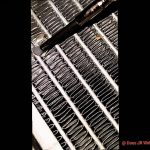Are you a DIY enthusiast looking to join metal pieces together? Then you must have heard about soldering. Soldering is an essential process for creating durable and robust bonds between metals. However, not all metals can be soldered with ease. Knowing which metals are suitable for soldering is crucial to successful metalworking.
Different metals may require different equipment, techniques, or soldering materials. But fret not. With the right approach, most metals can be effectively soldered. Whether it’s brass, nickel, gold, silver, or copper – each metal has its unique properties that determine its solderability.
In this blog post, we’ll take a deep dive into the world of soldering and explore what metals can be joined through this process. We’ll also provide some valuable tips on how to achieve the best results when working with each type of metal. Additionally, we’ll discuss the various types of soldering materials used in the process – including flux and solders – and give you some safety tips to consider when handling them.
Whether you’re a seasoned pro or just starting out in the world of metalworking, this post will equip you with all the knowledge you need to make informed decisions when it comes to soldering metals. So let’s dive in and discover what metals can be successfully joined through this fantastic process.
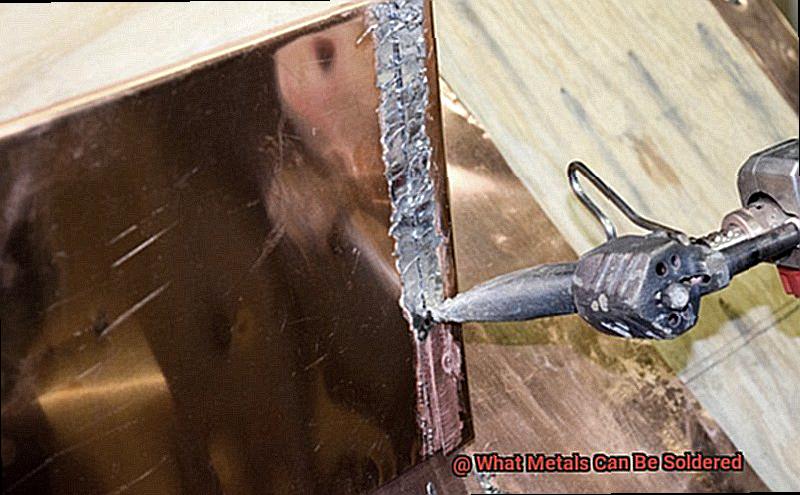
What is Soldering?
Contents
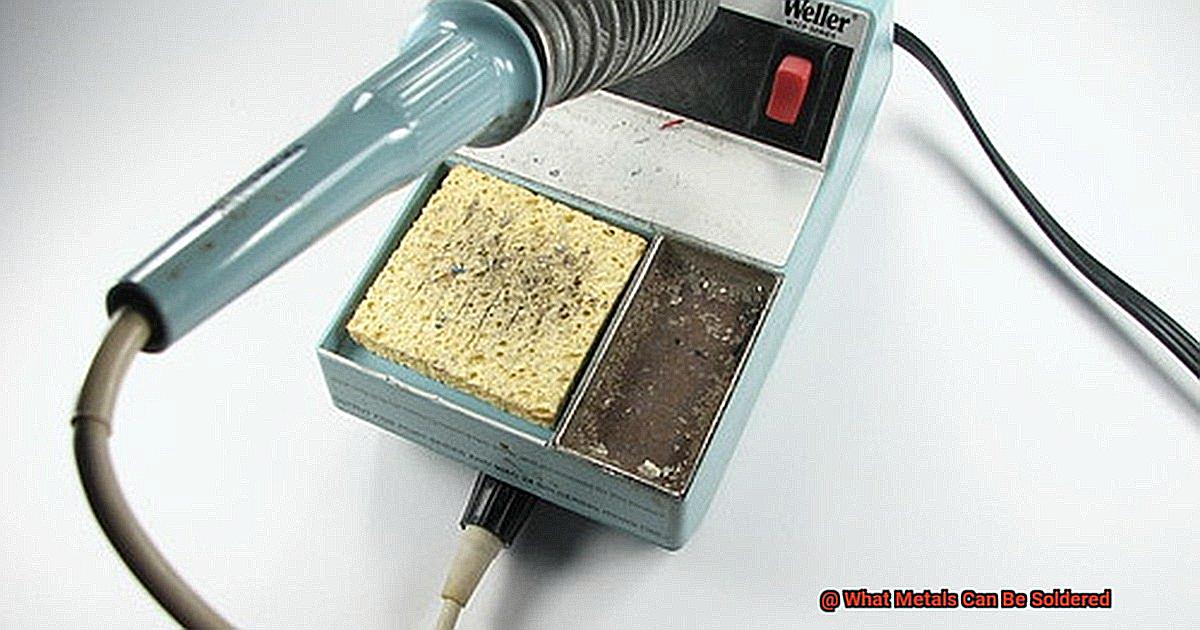
Soldering is the ultimate magic trick for joining two metal surfaces to form a strong bond that lasts. This remarkable technique involves melting a filler metal, known as solder, onto the joint to create a flow that fills gaps between the metals and cools to a sturdy bond. Soldering is the go-to method for electronics, plumbing, jewelry making, and other applications where a reliable bond is essential.
There are different types of soldering techniques available, depending on the metals involved. Soft soldering uses tin and lead low-temperature solder to join metals with a melting point below 450°C. Whereas hard soldering, also known as silver soldering or brazing, uses a higher-temperature solder made of silver and other alloys to join metals that have a melting point above 450°C.
Soldering may seem like an easy task, but it requires some basic tools and materials such as a soldering iron or torch, flux to clean the joint and promote bonding, and solder wire or pre-made solder pieces. The right type of solder for the job at hand, along with the appropriate temperature and technique, must be used to ensure a robust and durable bond.
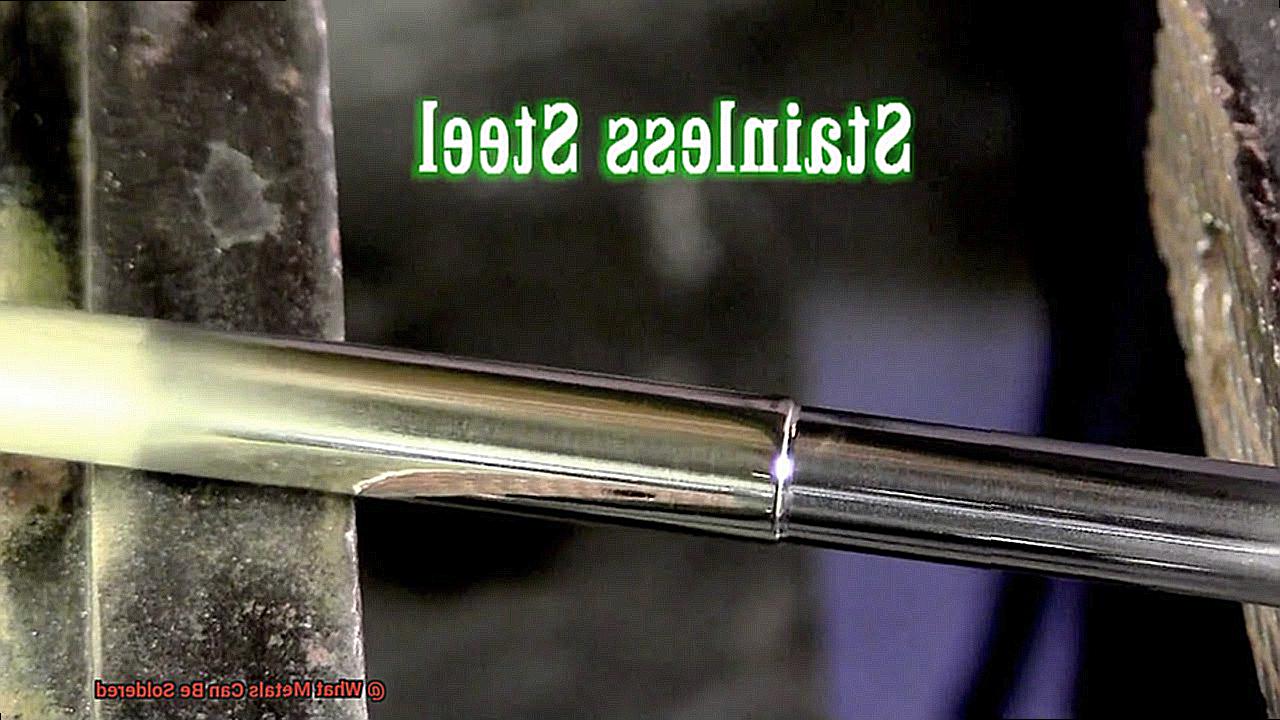
It’s important to note that not all metals can be soldered together due to differences in their physical and chemical properties. Copper, brass, silver, gold, and nickel are commonly soldered due to their low melting points and ease of joining with various solders. However, aluminum, titanium, and stainless steel are challenging to solder due to their high melting points.
Several factors such as surface preparation, temperature control, and flux selection can significantly affect the quality of the bond when soldering. For critical applications, it’s best to consult with an expert welder or metallurgist when selecting materials and designing soldered joints.
Soldering is an incredible technique that allows metal surfaces to come together to create a robust bond that lasts. It’s crucial to use the right type of solder and technique based on the metals being joined and the intended use of the bond.
Metals That Can Be Soldered
The process of soldering is like a magic trick that requires the right materials, techniques, and tools to get it right. Luckily, there are several metals that can be soldered with ease and precision.
Metals that can be soldered are those that have a lower melting point than the soldering material. Copper, brass, silver, and gold are some of the most commonly used metals for soldering due to their excellent heat conductivity and easy bonding with various types of soldering materials.
Copper is a go-to metal for soldering due to its high thermal conductivity and ability to form strong bonds with most types of solder. Brass is another fantastic option because of its low melting point and malleability, which makes it easy to shape into intricate designs.
Precious metals like silver and gold are also widely used for soldering, especially in jewelry making. They have excellent heat conductivity and can easily be joined with a variety of solders, including silver and gold solders.
Although aluminum, nickel, titanium, and stainless steel can also be soldered, they require specialized solders and techniques due to their unique properties and higher melting points. It’s important to note that not all metals can be easily soldered. For instance, cast iron, lead, and zinc cannot be soldered due to their high melting points or chemical properties that prevent them from forming strong bonds with soldering materials.
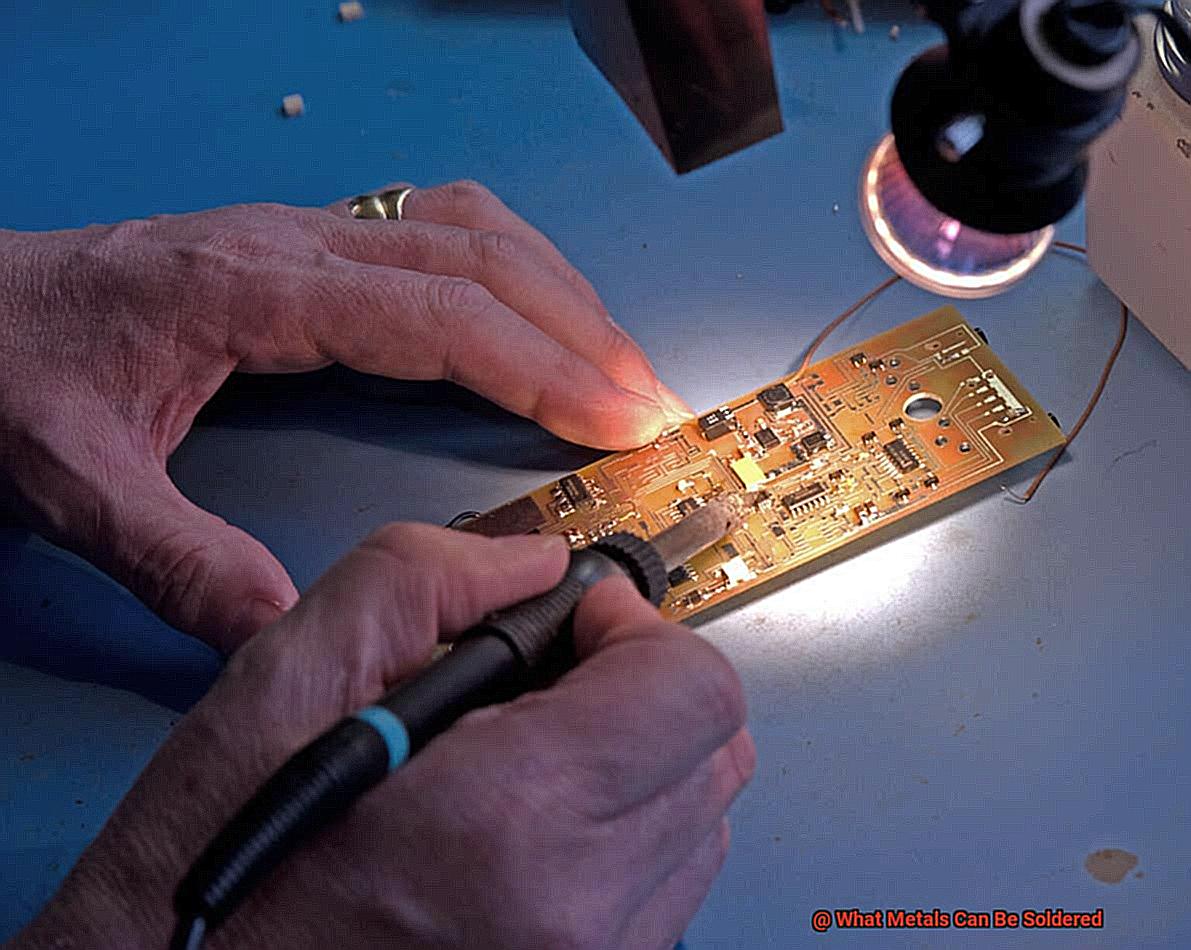
Selecting the right soldering material is vital as it depends on the type of metal being used and the intended application. Choosing the right combination of metals and solders ensures a strong and durable bond that will withstand the test of time.
Soldering might seem intimidating at first, but with the right knowledge and tools, you can create a sturdy bond between metal surfaces.
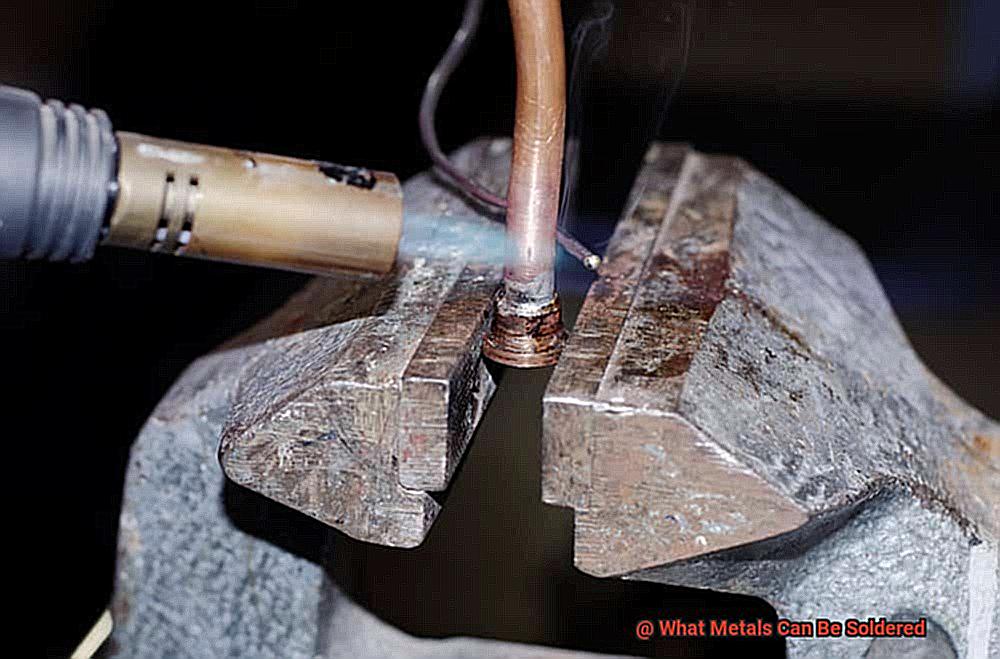
Metals That Cannot Be Soldered
In the previous section, we talked about how soldering is like a magical trick, creating sturdy metal bonds with ease. However, not all metals are created equal when it comes to soldering. In this section, we’re going to explore the challenges associated with soldering metals like aluminum, titanium, and stainless steel.
Let’s start with aluminum. This metal is as tough as nails when it comes to soldering. It has a high melting point which means that it requires a lot of heat to be soldered. Additionally, aluminum forms a thin oxide layer on its surface which acts like an impenetrable barrier and prevents the solder from properly adhering to the metal. It’s like trying to stick something on a slippery slope – it just won’t stay put. But fear not, specialized fluxes are available that can break down the oxide layer and allow the solder to bond with the metal.
Now let’s move on to titanium. This metal is no walk in the park either. It also has a high melting point and reacts with oxygen at high temperatures, forming a layer of titanium oxide on its surface. This oxide layer acts like an invisible force field and prevents the solder from adhering properly. It’s like trying to glue something together with a layer of grease in between – it just won’t stick. But don’t worry, specialized equipment and techniques are available that create an oxygen-free environment for soldering.
Finally, let’s talk about stainless steel. This metal is a bit of a tough nut to crack when it comes to soldering due to its complex composition. Stainless steel contains chromium which forms a protective layer on its surface. This layer acts like a suit of armor and prevents the solder from adhering properly. It’s like trying to stick something to a surface that has been coated in Teflon – it’s just not going to happen. However, there are specialized solders and techniques available that can be used to join stainless steel.
While there are some metals that cannot be easily soldered due to their properties, specialized equipment, techniques, and materials are available to overcome these challenges. It is important for welders to understand these limitations when working with different metals and seek expert advice if required.
Other Considerations for Soldering Metals
Soldering metals can be a rewarding experience, but there are other considerations to keep in mind besides just the basics. One of the most critical factors to consider is the type of soldering flux you use. Think of flux as your metal’s personal cleaning crew, ensuring a clean surface and preventing oxidation during the heating process. This step is vital to ensure a strong bond between metals.
Temperature is also a crucial factor when it comes to soldering metals. Different metals have different melting points, so it’s essential to choose a solder with a melting point lower than the metal you’re working with. If you’re working with multiple types of metal, you’ll need to use different solders for each one. The right temperature ensures that the solder flows seamlessly between the metals, creating a durable bond.
The type of joint you create is another consideration to keep in mind. Some joints require more heat than others, and some may require additional reinforcement or support to ensure they’re strong and secure. It’s important to choose the right technique for each joint to achieve optimal results.
Finally, some metals are more difficult to solder than others. Aluminum and stainless steel, for example, have high melting points and low thermal conductivity, making them challenging to solder. In these cases, specialized solders or techniques may be necessary. Don’t be discouraged if your first attempt doesn’t go as planned – practice makes perfect.
By keeping these important factors in mind – flux, temperature, joint type, and difficulty of soldering certain metals – you’ll be well on your way to creating sturdy metal bonds like a pro. With practice and patience, you’ll soon become an expert at soldering metals.
Choosing the Right Metal for a Soldered Joint
Soldering is an art that requires the right metal to create a flawless and long-lasting joint. When it comes to choosing the right metal for a soldered joint, there are several factors to consider.
First, think about the intended application of your soldered joint. Copper is a popular choice for electrical wiring and plumbing applications due to its excellent thermal conductivity and corrosion resistance. However, if you’re working on decorative or artistic projects, brass and bronze may be more suitable.
For electronics or jewelry making, silver is a go-to metal due to its high electrical conductivity and malleability. If you’re looking for durability and resistance to tarnishing, gold may be the perfect choice for your project.
But choosing the right metal is only half the battle. You also need to ensure that the type of solder being used has a lower melting point than the metal you’re soldering. This will prevent damage to the base metal and maintain the integrity of your joint.
It’s also important to consider any potential chemical reactions between the metals being soldered and the flux being used. Some fluxes may not be compatible with certain metals, leading to weakened joints or even damage to the metal itself.
m_w7KXHCewU” >
Conclusion
In summary, soldering is a valuable technique for creating strong and long-lasting metal bonds. While certain metals may present challenges due to their distinct physical and chemical properties, most metals can be successfully joined through soldering with the right approach.
Copper, brass, silver, gold, and nickel are popular choices for soldering due to their low melting points and ease of joining with various solders.
However, aluminum, titanium, and stainless steel require specialized solders and techniques due to their unique properties and higher melting points.
To ensure optimal results when soldering metals together, it’s crucial to select the appropriate type of solder based on the metals being joined and the intended use of the bond. Temperature control, flux selection, surface preparation, and joint type are other critical factors that can significantly impact the quality of the bond.
When deciding which metal to use for a soldered joint, several factors come into play including intended application, durability, as well as resistance to tarnishing or corrosion. It’s also essential to make sure that the type of solder used has a lower melting point than the metal being joined.
